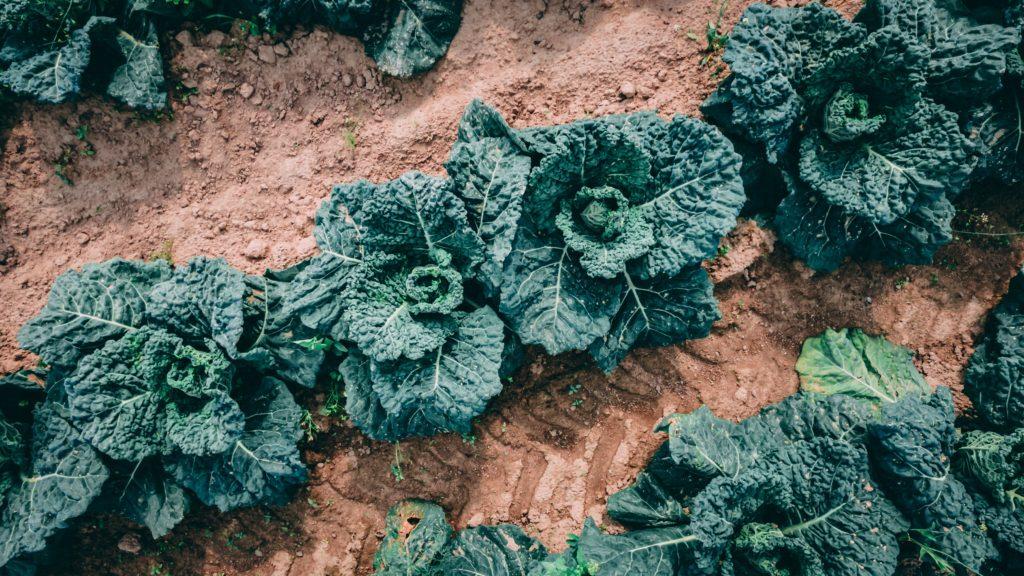
Growing kale at home is a fantastic way to reap the benefits of the delicious crop right on your doorstep. Learning how to harvest kale is easy.
It is a cold-hardy leafy green plant that can survive being planted either late summer or early spring, with colder weather helping to emphasise its nutty flavor and help growth.
It is such a versatile plant whether you are growing it or eating it. It can be planted in raised beds, regular garden beds or even containers.
You can also add kale to a variety of different dishes, from salads to stir fries. It is tasty and very nutritious!
If you are looking to plant kale, then read this handy guide to not only help advise, but to give you inspiration – no more heading to the grocery store for kale!
What Is Kale?
The hardworking plant is part of the Brassica family, so its relatives are broccoli, cabbage and brussels sprouts, amongst other types of “cole crops” – the type that grow better in cooler temperatures.
Kale tastes better when it matures in colder temperatures. It brings out the sweet flavor to its fullest, and will survive harsh weather conditions.
It can, however, also grow in warmer (not hot) climates, so there is no issue planting a seed or a young kale plant late spring.
The temperature will still feel cool, so think about planting it around 4 to 5 weeks before the last frost on the ground.
Finding The Right Place To Plant Kale
There are several things to look for when deciding the perfect place to grow kale. They are easy plants to own, but will need the right conditions to thrive.
- The pH of the soil needs to be around 6.5 to 6.8. This is because it helps to ward off disease, even though kale can tolerate soil up to pH 7.5 which is more alkaline.
- A kale plant needs the full sun, but it can do fine in partial shade.
- When you test your soil pH level, to get it right, mix nitrogen-rich compost into the soil.
- You will need to make sure the soil can drain so the roots stay healthy. When you plant, add in some fertilizer.
Went To Plant Kale
Because the kale is so versatile, you can start sowing the seeds or young plant either indoors or outdoors, depending on your preference.
Early Summer
To harvest kale at this time of the year, as soon as you feel that the soil is workable, direct-sow the seeds. If you are after a fall or winter harvest, plant around 3 months before the expected fall frost date.
Early Spring
During this time, young kale plants can be put outside around 3 or 5 weeks before the last frost date is due. If the temperatures go below freezing during the night, cover the plants.
Fall
The young kale plants can be set around 6 to 8 weeks in the fall before the first frost. In some places, they can even be planted in fall or winter.
How To Plant The Kale
Once you get past the planting stage, it will not be too difficult to keep your kale plant alive and healthy.
Here are a few tips on how to set the seed or a young kale plant:
- Planting seeds – sow around ¼ to ½ inch deep into the well-drained soil that you pre prepared. Around 2 weeks later, it is now time to thin out the seedlings to around 8 to 12 inches apart. This is because kale likes a lot of space!
- Young plants – You will need to plant these the same depth as you have them in their plant pot already. Space these as well, around 17 to 25 inches apart.
- Once planted, water them well!
Pests To Look Out For
Just like with every plant, there is always the chance of pests or diseases. Flea beetles are shiny-coated beetles with big rear legs that jump when they feel threatened.
This type of insect likes the Brassica family of plants!
Cabbageworms are more common and chew the leaves of the kale plant. Look out for holes in the leaves!
The cabbage aphids are tiny bugs which you may find clustered in between the leaves. For many of these bugs you will find lots of natural ways to spray them away.
Caring For The Kale Plant
Once the plantation of the kale has been successful, you will need to keep caring for it. It needs to be kept fully hydrated and fed. Use a continuous-release plant food so it is always ‘eating’.
Remember to mulch the soil so it can keep out things such as weeds, but it also helps to keep the kale cool.
Once the first freeze of the fall has hit, mulch it again. The kale will keep producing leaves throughout fall and winter.
If it rains a lot, but is inconsistent, change your watering accordingly. So, up to around 1.5 inches of water.
How To Harvest Kale
Here are a few things to look out for when it comes to kale, and how to harvest correctly.
- When you harvest, take a handful at a time. Begin with the oldest leaves down at the bottom.
- If any leaves are rotten or yellow, get rid of them.
- When the leaves are roughly the same size as your hand, then they are ready to eat!
- Ignore the top centre of the plant as removing this will affect its productivity.
Roundup
Kale is a delicious leafy green that contains vitamins A, C, K and B6, amongst a lot of other nutritious benefits.
It is best planted for the colder season to bring out its nutty, sweet flavor, and to help it grow to its fullest.
It can be cooked and added to meals, or eaten raw (but washed well) within a salad, and should last for about a week when put into the refrigerator.
